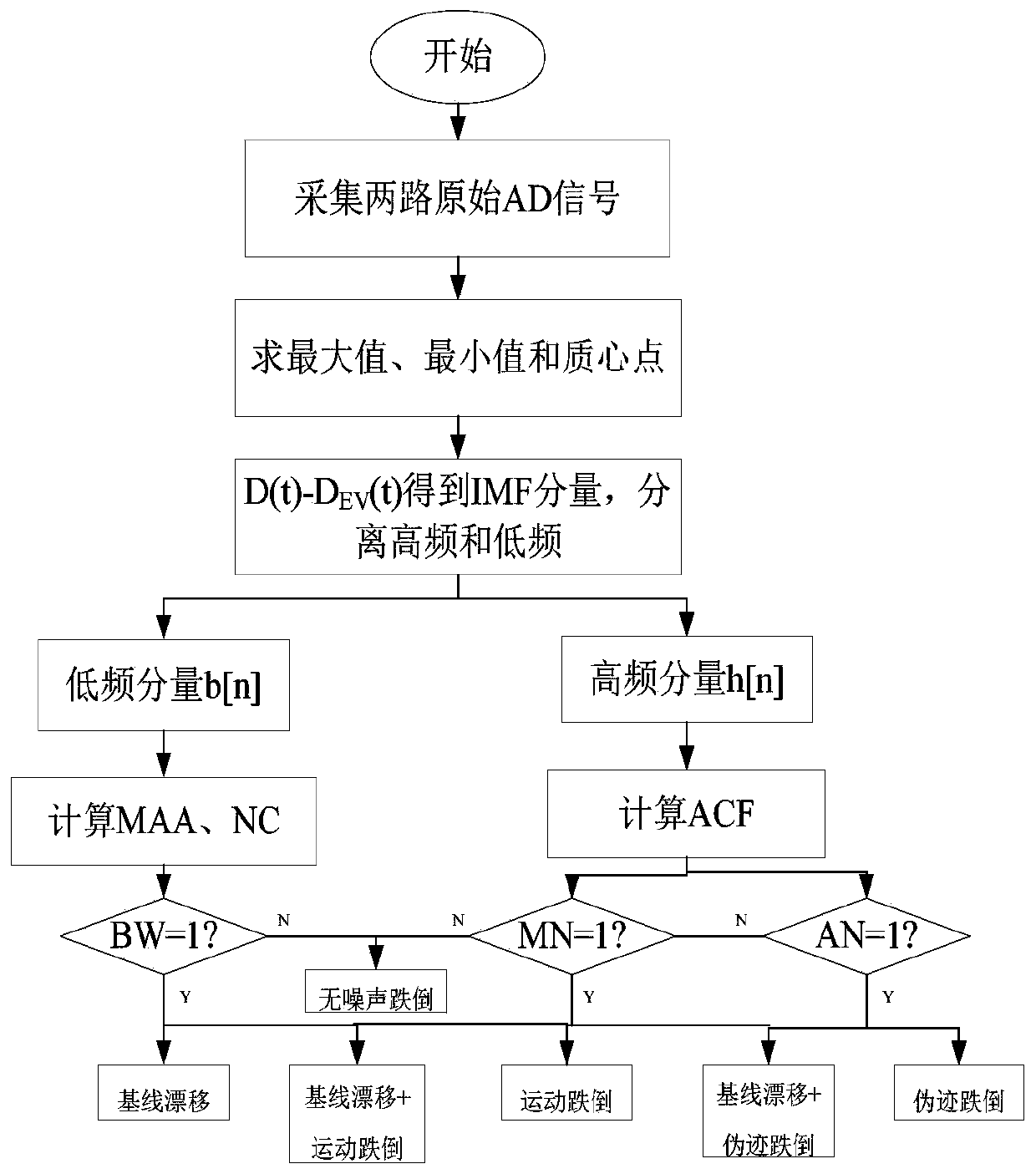Old people tumble detection method and system based on non-contact radar technology
A non-contact, detection method technology, applied in the direction of radio wave measurement system, measurement device, diagnostic recording/measurement, etc., can solve the adaptability of heavy calculation load, echo signal can not determine which is the sign signal, and fixed basis function Restrictions and other issues
- Summary
- Abstract
- Description
- Claims
- Application Information
AI Technical Summary
Problems solved by technology
Method used
Image
Examples
Embodiment 1
[0041] This embodiment discloses an elderly fall detection method based on non-contact radar technology, such as figure 1 shown, including the following steps:
[0042] Step 1: collect the original signal D(t) of the radar sensor, and collect N*2 groups in total; where N is the number of FFT transformation points and is a multiple of 256;
[0043] In a specific implementation example, when the radar sensor is arranged, one is installed in the bedroom, one is installed in the bathroom, and one is installed in the living room, with a vertical installation height of 1.8 to 2 meters;
[0044] Step 2: Find the maximum point D of the original signal MAX (t) and minimum point D MIN (t);
[0045] Step 3: Do the maximum point D of the original signal MAX (t) and minimum point D MIN (t) envelope, and find the centroid point D of the envelope EV (t);
[0046] Step 4: Subtract the centroid point sequence D from the original data sequence D(t) EV (t), you can get a new data sequenc...
Embodiment 2
[0080] The purpose of this embodiment is to provide a computing device, including a memory, a processor, and a computer program stored in the memory and operable on the processor. When the processor executes the program, the following steps are implemented, including:
[0081] Collect the raw signal of the radar sensor;
[0082] Find the maximum and minimum points of the original signal;
[0083] Make the envelope of the maximum point and minimum point of the original signal, and find the centroid point of the envelope;
[0084] Subtract the centroid point sequence from the original data sequence to obtain a new data sequence with low frequency removed, repeat the steps to subtract the centroid point sequence from the original data sequence to obtain a sequence of IMF components, and separate the low frequency and high frequency components;
[0085] Subtract the obtained IMF component from the original signal to form a new signal;
[0086] In the iterative process, the maxim...
Embodiment 3
[0088] The purpose of this embodiment is to provide a computer-readable storage medium.
[0089] A computer-readable storage medium, on which a computer program is stored, and when the program is executed by a processor, the following steps are performed:
[0090] Collect the raw signal of the radar sensor;
[0091] Find the maximum and minimum points of the original signal;
[0092] Make the envelope of the maximum point and minimum point of the original signal, and find the centroid point of the envelope;
[0093] Subtract the centroid point sequence from the original data sequence to obtain a new data sequence with low frequency removed, repeat the steps to subtract the centroid point sequence from the original data sequence to obtain a sequence of IMF components, and separate the low frequency and high frequency components;
[0094] Subtract the obtained IMF component from the original signal to form a new signal;
[0095] In the iterative process, the maximum absolute ...
PUM
 Login to View More
Login to View More Abstract
Description
Claims
Application Information
 Login to View More
Login to View More - R&D
- Intellectual Property
- Life Sciences
- Materials
- Tech Scout
- Unparalleled Data Quality
- Higher Quality Content
- 60% Fewer Hallucinations
Browse by: Latest US Patents, China's latest patents, Technical Efficacy Thesaurus, Application Domain, Technology Topic, Popular Technical Reports.
© 2025 PatSnap. All rights reserved.Legal|Privacy policy|Modern Slavery Act Transparency Statement|Sitemap|About US| Contact US: help@patsnap.com



